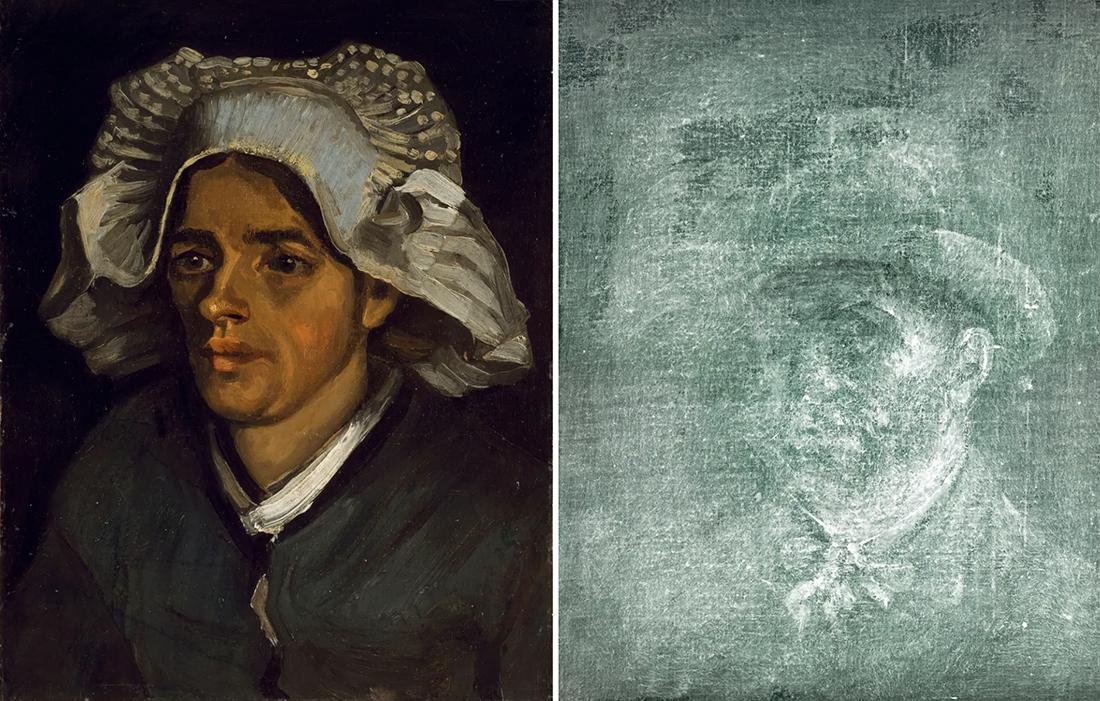The National Galleries of Scotland announced on Thursday that a previously unknown self-portrait by Vincent van Gogh has been discovered hidden on the back of another artwork.
 An x-ray of Van Gogh’s Head of a Peasant Woman (1885, left) has revealed a hidden image (right). Credit: The National Galleries of Scotland
An x-ray of Van Gogh’s Head of a Peasant Woman (1885, left) has revealed a hidden image (right). Credit: The National Galleries of Scotland
The unexpected discovery occurred as art conservators in the Edinburgh gallery were utilizing an X-ray machine to examine a Dutch post-Impressionist piece from 1885 by Vincent van Gogh. During the process, they stumbled upon a concealed self-portrait of the artist.
The unveiled self-portrait depicts a bearded man donning a brimmed hat and a loosely tied neckerchief around his neck. Notably, the left ear—infamously severed by the artist in 1888 following a dispute with Paul Gauguin—is clearly visible in the portrait.
“For more than a century, this self-portrait remained concealed on the reverse side of the canvas featuring Head of a Peasant Woman, hidden beneath layers of glue and cardboard,” stated the museum in an official announcement.
The artwork, which entered the National Gallery of Scotland’s collection in 1960 as a gift from a prominent Edinburgh lawyer, originally showcased a local woman from Nuenen—a town in the southern Netherlands where the artist resided from December 1883 to November 1885.
“This is an exceedingly rare moment. We’ve uncovered an unknown masterpiece by Vincent van Gogh, one of the world’s most influential and beloved artists,” remarked Prof Frances Fowle, the senior curator of French art.
Lesley Stevenson, the gallery’s senior conservator, expressed her astonishment at seeing the artist “looking out at us.” The initial shock and excitement arose when the X-ray revealed the hidden self-portrait, which, according to experts, could be exposed through delicate conservation efforts. The challenging task of removing the layers of glue and cardboard is currently under consideration, with ongoing research to ensure the preservation of the painting.
Vincent Van Gogh’s practice of painting on both sides of the canvas during financially challenging periods led to the covering and loss of some of his works over time. Now, the National Galleries of Scotland has added another chapter to this intriguing narrative by bringing to light one of the artist’s concealed self-portraits.
More information: National Galleries of Scotland





